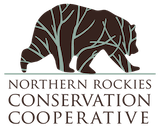Author: Katie Shepherd Christiansen
Organization: Coyote Art & Ecology
Title: Beauty that Inspires Coexistence: How Natural Area Interpretive Artwork Can Build Conservation Values
Integrating art into natural area interpretation can foster values supportive of human-wildlife coexistence. The interpretive artwork installation at Jackson’s Astoria Hot Springs Park demonstrates an artful interpretive resource presented to increase sense of place and connection to nature.
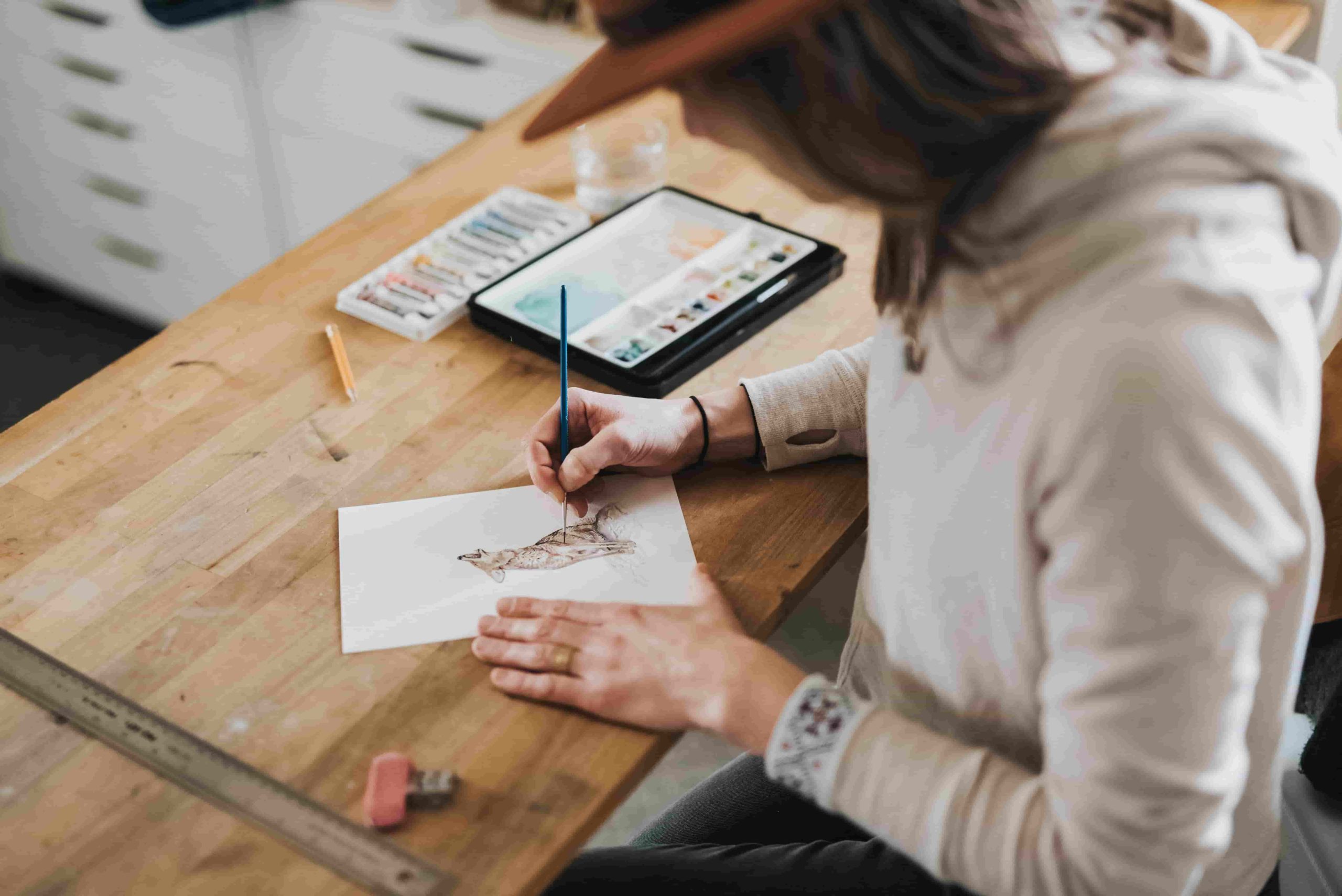
Art conveying the beauty of the natural world offered within the context of an interpretive resource can serve as a foundation for building values around ecologically rich systems. Such artful interpretation provides meaningful context to traditional natural history education by transcending biophysical information with values-oriented themes such as beauty and preciousness. Aldo Leopold acknowledged the importance of this framing: “Our ability to perceive quality in nature begins, as in art, with the pretty.” Ahead of appreciating and protecting nature, Leopold suggests we must sense its beauty.
The interpretive artwork at Astoria Hot Springs Park,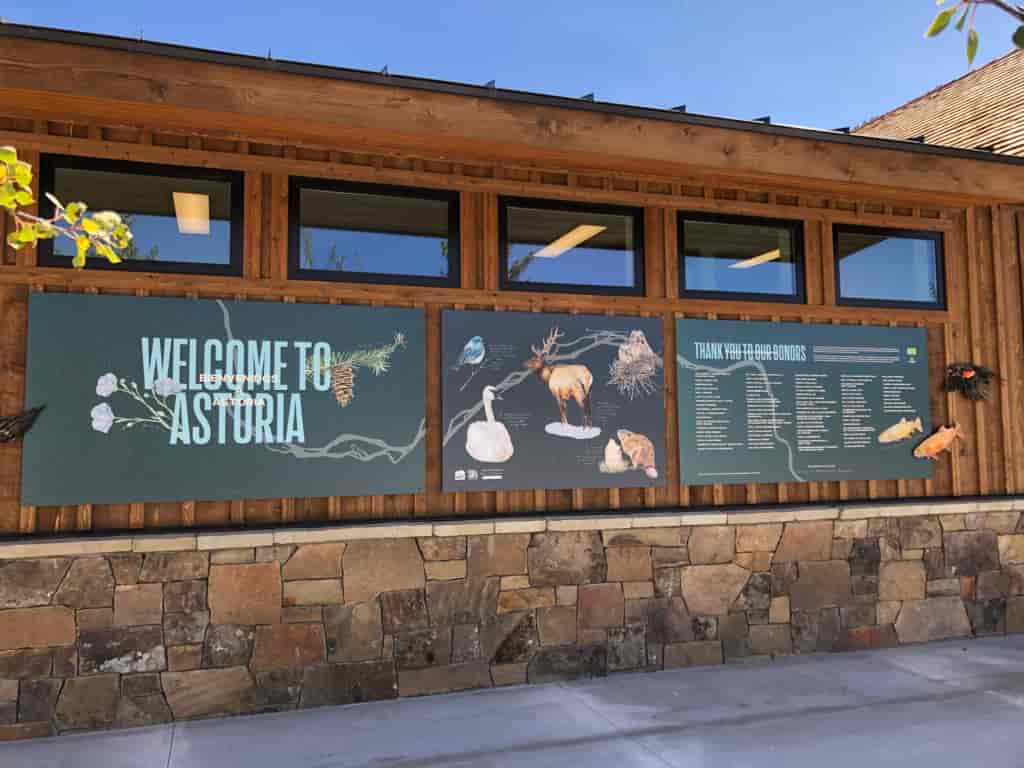 installed fall 2020, conveys the beauty and uniqueness of the Park’s setting along the Snake River. The 4’ tall and 20’ wide permanent installation is mounted along the side of the Park’s ticketing building to welcome visitors. Wildlife swim, fly, and grow in intricate vignettes across a triptych of panels backdropped by the park’s rivered topography. Handwritten prose, appearing like notes in a naturalist’s journal, is scripted alongside wildlife portraits to offer personal and poetic reflections on depicted species.
installed fall 2020, conveys the beauty and uniqueness of the Park’s setting along the Snake River. The 4’ tall and 20’ wide permanent installation is mounted along the side of the Park’s ticketing building to welcome visitors. Wildlife swim, fly, and grow in intricate vignettes across a triptych of panels backdropped by the park’s rivered topography. Handwritten prose, appearing like notes in a naturalist’s journal, is scripted alongside wildlife portraits to offer personal and poetic reflections on depicted species.
The selection of featured species and the scope of written content reflects the unique wild of the park’s specific ecology. A total of ten local flora and fauna species appear across the panel series, ranging from the common red-winged blackbird to the surprising mountain bluebird. The collection highlights the biodiversity of the park, providing visitors with a broad look at some of the life forms with whom this land is shared: a pair of Snake River cutthroat trout, a winter-ragged elk, a beaver beside a chewed up aspen stump, great horned owlets peeking out from a nest. Prose encourages the viewer to direct awareness into the surrounding nature through specific habitat placement (“stories-high cottonwood”), seasonal notes (“spring’s vibrant winds”), and ecological connections (“rump to wind”). Together, the art and writing offer a simple yet enriching life web that backdrops and provides context to a visitor’s experience of the park.
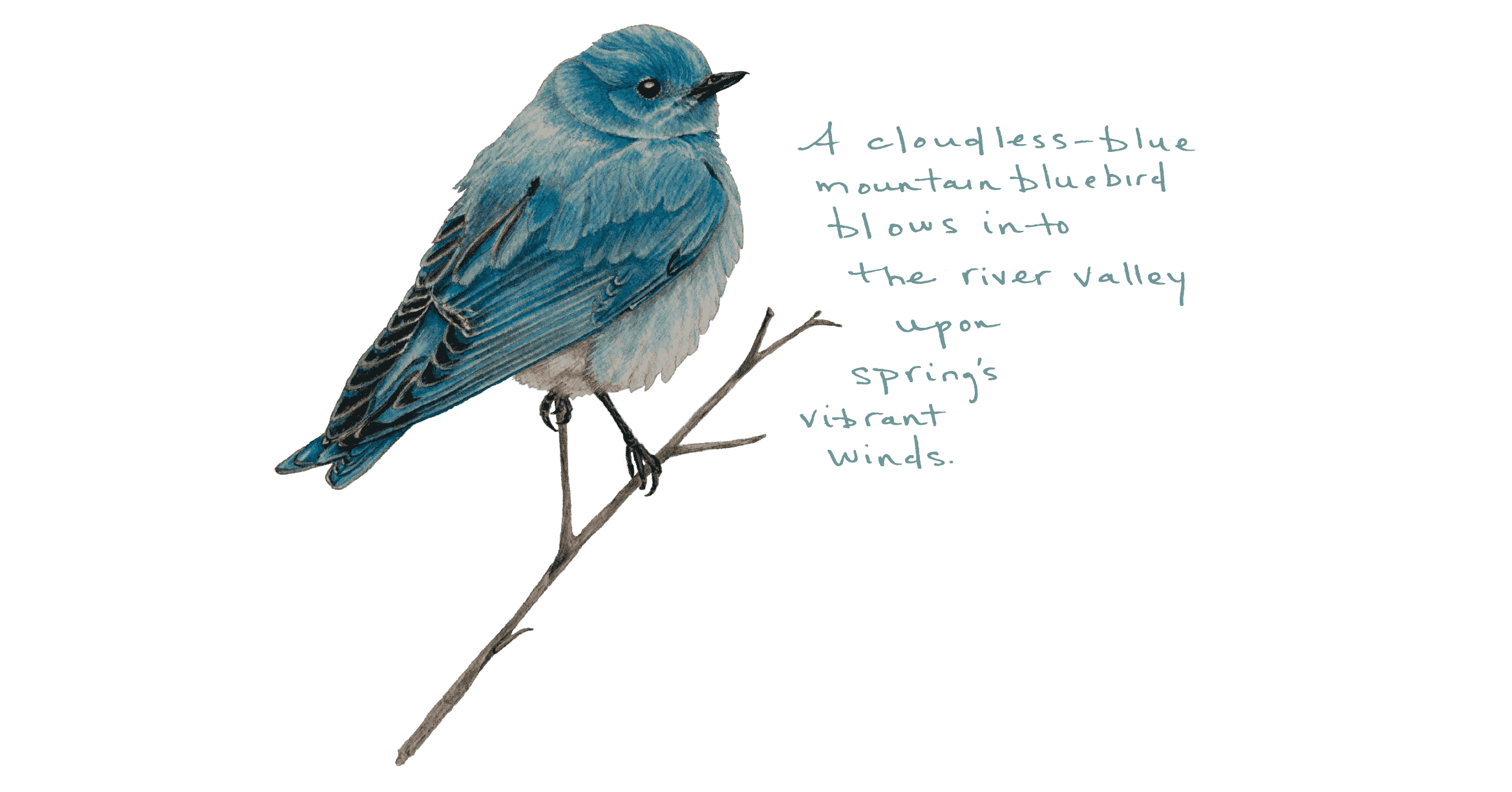 The installation’s artful expressions of ecology move a viewer beyond biophysical information collecting and into an emotional connection with the subjects. Park visitors have commented that the artwork inspired them to consider their location and enhanced their understanding of the place. Park managers have expressed that the installation leaves a lasting impression by inviting people to expand their connection to the ecology of the site. In its simple showcase of beauty, the interpretive display spurs an initial capture of curiosity and interest, through which a viewer can connect with a deeper sense of place within nature.
The installation’s artful expressions of ecology move a viewer beyond biophysical information collecting and into an emotional connection with the subjects. Park visitors have commented that the artwork inspired them to consider their location and enhanced their understanding of the place. Park managers have expressed that the installation leaves a lasting impression by inviting people to expand their connection to the ecology of the site. In its simple showcase of beauty, the interpretive display spurs an initial capture of curiosity and interest, through which a viewer can connect with a deeper sense of place within nature.
Development of the interpretive installation was led by Katie Shepherd Christiansen (Coyote Art & Ecology), in partnership with Astoria Park Conservancy, the Trust for Public Land, Townsend Collective, and Jackson Hole Public Art. Artwork creation and nature writing composition were completed by Christiansen. This project was funded through a grant from the National Endowment for the Arts and funding from Astoria Park Conservancy.
Photo Credits: Katie Shepherd Christiansen
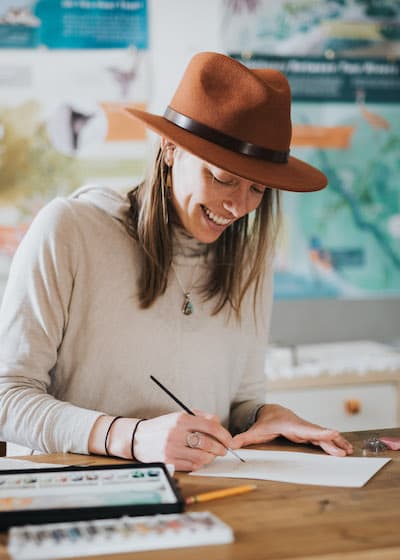 Katie Shepherd Christiansen is an artist, naturalist, and conservationist. Her intricate wildlife portraits and nature writings appear in books, exhibits, and on natural area interpretive resources across the country. Katie’s knowledge of natural systems lend to her artwork’s fine attention to detail, and her sense for beauty inspires meaningful connections to the natural world. Katie’s work in conservation spans science, policy, management, communications, grassroots organizing, community building, and education.
Katie Shepherd Christiansen is an artist, naturalist, and conservationist. Her intricate wildlife portraits and nature writings appear in books, exhibits, and on natural area interpretive resources across the country. Katie’s knowledge of natural systems lend to her artwork’s fine attention to detail, and her sense for beauty inspires meaningful connections to the natural world. Katie’s work in conservation spans science, policy, management, communications, grassroots organizing, community building, and education.
Katie is Artist-in-Residence at the Northern Rockies Conservation Cooperative and editor and illustrator of the book The Artist’s Field Guide to Yellowstone (May 2021). She holds a master’s degree from Yale’s School of the Environment. Her collaborators have included the National Endowment for the Arts, Trust for Public Land, National Geographic, the WILD Foundation, and AMB West Ranches. Learn more at coyoteartandecology.com.
